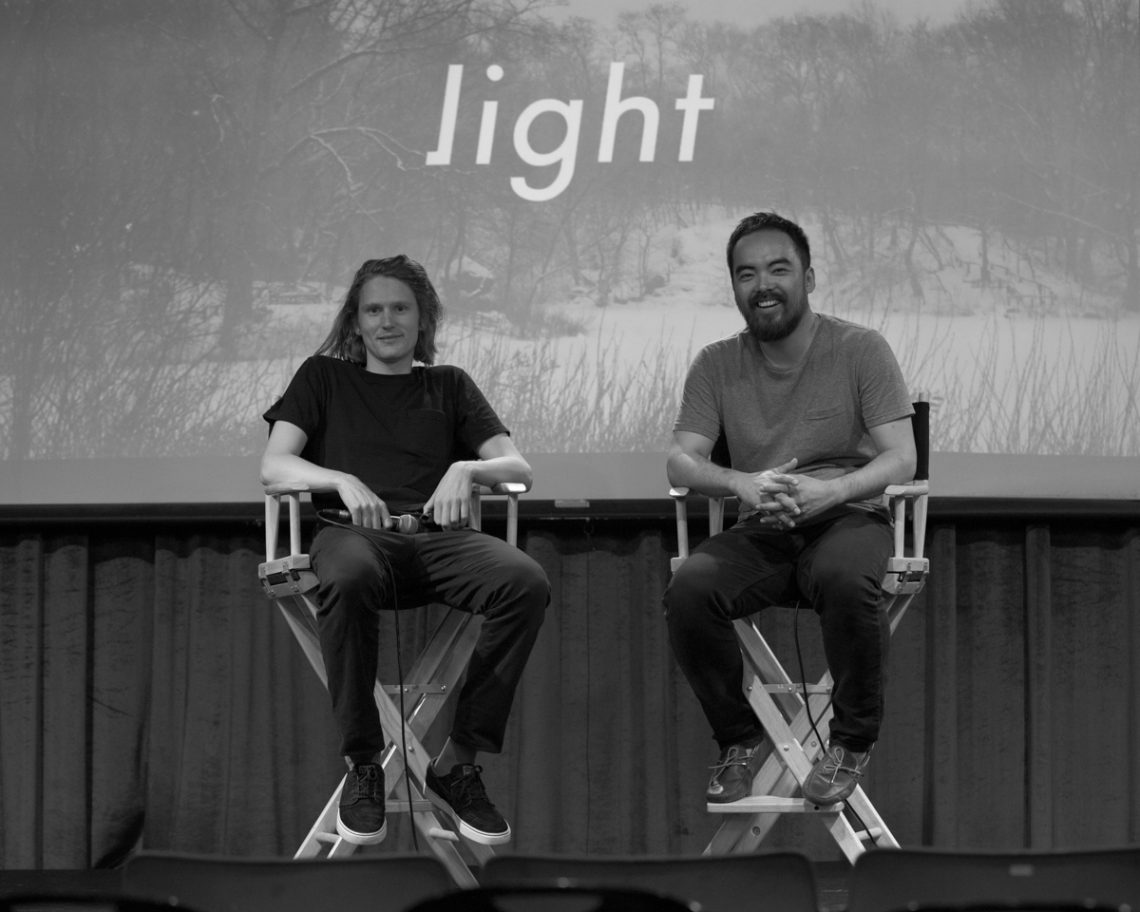Kaiwei Tang, CEO and Cofounder, Light
By Andrew Connor
February 19, 2020

If you ever held Motorola’s iconic Razr flip phone, you held a product that Kaiwei Tang (MBA 2006, MDes 2014) helped create. Once a product lead in the mobile phone industry, Tang worked on phone designs and development for brands such as Motorola, Blackberry, and Nokia, sometimes working on as many as 10 designs within a year.
In an effort to find out, Tang came to the Master of Design program at IIT Institute of Design. He wanted to get a more rigorous design education so he could be in the position of making decisions. Right after receiving his degree in 2014, Tang joined a design incubator run by Google in New York, where he met Joe Hollier. Together, the duo created Light, with Tang serving as chief executive officer.
Tang’s unique background and deep experience in design, technology, and human-centered research prepared him to join Hollier in creating the Light Phone, a pared-down ancillary phone the size of a credit card that could only make and receive calls.
Its design was attractive and minimalist, with only a single button that activated a glowing touchpad. Users were to carry Light Phone as a temporary smartphone replacement when they wanted to be deliberately disconnected, an idea that came to Tang and Hollier when they realized how few people could live in the moment without instinctively burying their noses in their devices.
“Just sit in the park or a restaurant and watch people with their smartphones, and you will see what’s wrong,” says Tang. “It’s so weird and unnatural that we’re all staring at a screen most of the time. I think people are craving for an escape, but we’re being overpowered by this habit.”
A body of research supports Tang’s views suggesting that civilization has an unhealthy and addictive relationship with the smartphone. A Nielsen study from 2018 found that adults in the United States spend roughly two-and-a-third hours looking at their phones each day. Researchers have also linked smartphone use to anxiety and depression, while a study at Purdue University Fort Wayne reported that nearly 90 percent of undergraduate participants felt “phantom” phone vibrations, even if their phones weren’t in their pockets.
It isn’t necessarily that the smartphone is inherently problematic. Rather, many of the applications that are the bedrock of a smartphone’s operating system are specifically designed to keep users coming back as frequently as possible. Silicon Valley executives and innovators have admitted to as much.
“In order to sustain the business model of an application or social media platform on a smartphone you have to rely on advertisements pretty heavily,” says Tang. “The design decisions circle around keeping users around as long as they can, and that becomes the measurement if you’re successful or not. Joe and I just don’t want to be a part of that.”
The original Light Phone was an aggressive, unabashed experiment in technological minimalism, but it wasn’t without its faults. You could save up to only 10 phone numbers on the phone, which required use of a corresponding desktop dashboard. It also operated off an aging 2G network, leading to spotty service. And despite its lack of features, it cost $150—not much less than a basic smartphone.
Despite this, Light Phone received more than double its initial funding goal on Kickstarter, shipped some 15,000 units, and as recently as summer 2019 won a Red Dot Award and an iF Award. There was clearly an interest in the kind of disconnected lifestyle that Tang and Hollier were selling.
The duo is now on to Light Phone II, which officially launched in September 2019. Tang and Hollier sent a survey to users to see which features would make the second iteration of the phone more of a full-time option, rather than just an ancillary device. That’s why the phone now carries features such as an e-ink screen, texting, and an alarm. Features including ride hailing, directions, and music playback, Tang says, are on the way.
“We have a very clear view of what features should look like on Light Phone II, where every tool has a very clear goal as to what it’s doing,” says Tang. “We don’t want social media or email or anything with feeds that creates the opportunity for infinite swiping.”
As such, Light Phone II on the surface resembles a simple feature phone, and while Tang acknowledges it might look like a step backward to some, he instead sees it as a progression, a solution to the problem of hyper connectivity that the ubiquitous smartphone has exacerbated. Already, the phone has received acclaim for this, including a spot on TIME’s list of best inventions of 2019.
“One thing they taught us at ID was to design something that does one thing well—don’t try to do everything,”’ he says. “That’s what we’re trying to do. Not one single object can do everything. If we can do anything, anytime, from one device, then nothing is special anymore.”